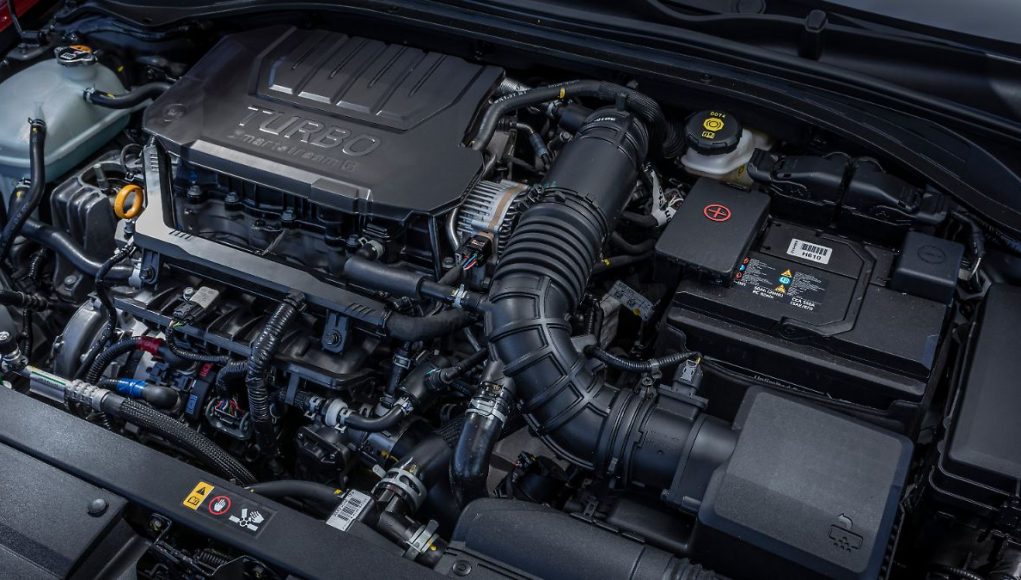Easily explained
How does an internal combustion engine work?
This audio version was artificially generated. More info | Send feedback
Naturally aspirated engines impress with their even power development. However, higher power output can be achieved through turbocharging. Two variants of this turbocharging have become established.
The name says it all: combustion engines generate their power by burning fuel in their cylinders. In addition to petrol, diesel or gas, oxygen is also required. This is traditionally drawn into the cylinder by outside air, where a piston moves up and down. In a four-stroke engine, the downward movement creates a vacuum in the cylinder in the first stroke, which means that fresh air is automatically drawn in through the intake valves. Hence the name naturally aspirated engine.
The more air and therefore oxygen available for combustion, the higher the power output can be with a correspondingly high fuel supply. However, the amount of air that can be naturally drawn in is limited.
This is where supercharging helps. In addition to the negative pressure generated in the piston, fresh air is forced into the cylinder. This means that more power can be extracted from the same engine. Supercharging also makes it possible to raise engines with small displacement to the performance level of engines with large displacement. Keyword: downsizing.
What does a turbocharger do?
There are two principles available for charging: turbocharger or compressor. The most common solution is the turbocharger – the full name of which is exhaust gas turbocharger (ATL). The name makes it clear: the technology uses the exhaust gases that are pressed out of the cylinders with considerable pressure after combustion. In the exhaust gas flow there is a small turbine that is driven by the exhaust gases and is in turn connected to the compressor wheel. This second turbine works in exactly the opposite way and pushes fresh air into the intake tract.
The advantage of the exhaust gas turbocharger is that no additional energy needs to be used to operate it. The downside: the turbocharger only really gets going when the engine has reached a certain speed and the exhaust gas flow is strong enough.
At low speeds, the so-called turbo lag occurs – the engine operates rather weakly in this operating range, followed by an even more powerful turbo boost. In contrast, fans of naturally aspirated engines appreciate the even power development of the free-breathing engines. The turbo lag can be minimized, for example, by using two chargers of different sizes, the smaller of which responds faster, i.e. with a lower exhaust flow.
How does a supercharged engine work?
Another way of charging is with a compressor. This is a mechanical charger that needs to be driven additionally. The compressor is usually connected to the engine via a belt or chain drive. This allows the compressor to build up good pressure even at low speeds. At the same time, however, the drive also consumes engine power, which increases consumption.
In principle, however, the turbo engine can also lead to significantly higher consumption, namely when the driver demands a lot of power. “Turbo runs, turbo guzzles,” as the saying goes.
This phenomenon was particularly pronounced in older turbo technology. In the past, the mixture was heavily enriched at full load, meaning more fuel was fed into the combustion chamber in order to reduce the exhaust gas temperature to a level that the turbo could tolerate. As a result, this led to a significantly greater increase in fuel consumption compared to a naturally aspirated engine.
A third variant has been used for several years: the electrically driven compressor. Instead of the combustion engine, the charger is powered by its own electric motor, which is significantly more efficient. This technology went into series production for the first time in 2016 in the Audi SQ7, where a so-called electric charger gave the four-liter diesel engine a boost. However, this usually requires a 48-volt electrical system that provides enough energy to drive the electric charger.































